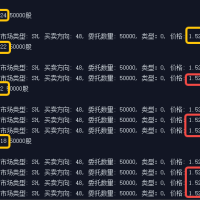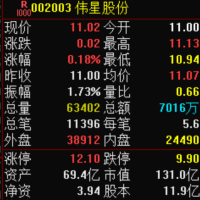One of the fastest ways to CUT 26 Coins improve is by shifting focus. Instead of staring at your receiver, watch the space he's running into. This helps you spot open windows before he arrives and anticipate lurking defenders.
Adopt a high-to-low progression. Always check the deepest routes first (streaks, posts), then move down to shorter ones (drags, flats). This prevents you from missing potential touchdowns by settling for "safe" throws too quickly.
Another trick: before the snap, identify the second-level defenders (linebackers and safeties). Imagine a straight line across the field where they're positioned. As the play develops, see how long they can hold that line-gaps usually mean open passing lanes.
Outsmarting User Defenders
User-controlled defenders are the most dangerous opponents. Identify them immediately after the snap. Then, put them in impossible situations with high-low reads. One route goes over, another underneath-no matter what the user does, someone's open. For added complexity, create triangles with three routes converging in the same zone.
Pocket Presence and Scrambling
Stop dropping back 10+ yards on standard plays. Doing so turns a 20-yard pass into a 30-yard attempt, giving defenders more time to react. Instead, move subtly within the pocket using short stick adjustments. Aim to throw within three seconds-if nothing's there, get ready to scramble.
When rolling out, always move toward the side where your receivers are running routes. Running the opposite way makes completions nearly impossible.
New in College Football 26: while scrambling, you can direct receivers into open space by holding the left trigger and flicking the right stick. This makes you the true point guard of your offense. Combine this with QB jukes (right trigger + right stick flick) to evade pressure effectively.
Catch Types: Turning 10 Yards into 30
The game gives you three catch options, each designed for specific scenarios:
Run After Catch (RAC): Use when your receiver has green grass ahead. Great for maximizing yardage.
Possession Catch: Perfect for sideline grabs or traffic situations where securing the ball is a priority.
Aggressive Catch: Best for one-on-one jump balls with high "spectacular catch" players, or high-point throws (LB/L1) to taller receivers.
Knowing which catch type to use often means the difference between punting and keeping the drive alive.
Smarter Playcalling
Remember: calling a screen doesn't lock you into throwing it. Watch how the defense reacts. If they blow it up, check your other routes-sometimes they're wide open.
Avoid deep lobs unless your receiver is at least even with the defender. Throwing into coverage with no leverage is just giving the ball away. Always ask: What's my best option here? Instead, I feel like forcing this post route.
Final Thoughts
Passing in College Football 26 can feel overwhelming at first, but once you master the basics-ball placement, reading defenses, managing the pocket-the game slows down dramatically. You'll move from chaotic drives filled with turnovers to methodical, efficient possessions that keep defenses guessing.
Practice these fundamentals, trust your progressions, and you'll start stringing together drives like a veteran quarterback. Having enough CFB 26 Coins can help you a lot.
Reading defenses is one of the most important skills in College Football 26. If you don't know what the defense is doing before the ball is snapped, you're playing blind-and that almost always leads to mistakes. Most players never learn this skill, but once you do, the game slows down, and you start making smarter throws and putting together consistent scoring drives.
Thanks to the EA Creator Network, I had exclusive early access to College Football 26, and today I'll teach you how to read any defense in three simple steps. By the end, you'll know how to diagnose coverages and how to attack each one for big plays. Having plenty of CUT 26 Coins will also help in achieving victory.
Step 1: Count the Safeties
The very first thing you should do before snapping the ball is count the safeties.
One high safety → Defense is likely in Cover 1 (man) or Cover 3 (zone).
Two high safeties → Defense is likely in Cover 2, Cover 4, or Cover 2 Man.
This quick observation immediately narrows down the possibilities and sets up your next read.
Step 2: Identify Man vs. Zone
Once you know how many safeties there are, you need to determine whether the defense is in man or zone coverage. The easiest way to do this is by using motion or a formation flip.
If a defender follows your receiver across the field, it's man coverage.
If the defender stays put or shifts zones instead of following, it's zone coverage.
Now you can pair this with the safety count:
One safety + man → Cover 1
One safety + zone → Cover 3
Two safeties + man → Cover 2 Man
Two safeties + zone → Cover 2 or Cover 4
Step 3: Check Cornerback Depth
If motion doesn't give you a clear answer, cornerback depth will. Look at the outside corners:
5–6 yards off the line → Cover 2
7–10 yards off the line → Cover 4
That simple three-step process-safeties, man vs. zone, corner depth-will correctly identify the defense 99% of the time. Many players even keep a flowchart handy as a reminder during games.
Advanced Looks: Cover 6 and Cover 9
While most of your opponents will stick to CFB 26 Coins standard coverages, advanced players may mix in Cover 6 or Cover 9. Both are hybrid zone defenses with two safeties deep, but different rules depending on the strong and weak sides of the field.
 🔥迅投用户速速关注:论坛未公开的量化技巧4844 人气#QMT投研数据服务
🔥迅投用户速速关注:论坛未公开的量化技巧4844 人气#QMT投研数据服务 passorder 不按限定价成交?38 人气#有问必答
passorder 不按限定价成交?38 人气#有问必答 关于市值计算的问题109 人气#有问必答
关于市值计算的问题109 人气#有问必答 百家乐公式大全:四大经典投注策略详解与实78 人气#有问必答
百家乐公式大全:四大经典投注策略详解与实78 人气#有问必答